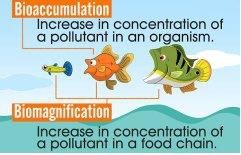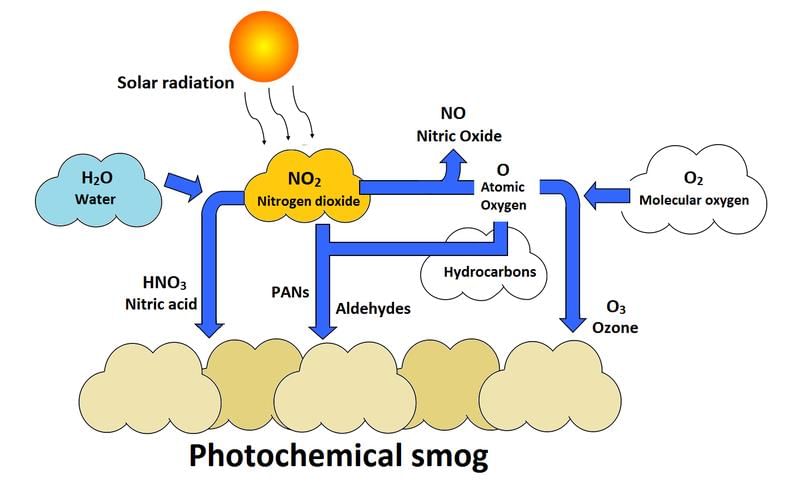JAMB Exam > JAMB Tests > Test: Air Pollution, Water Pollution & Their Control (Old NCERT) - JAMB MCQ
Test: Air Pollution, Water Pollution & Their Control (Old NCERT) - JAMB MCQ
Test Description
10 Questions MCQ Test - Test: Air Pollution, Water Pollution & Their Control (Old NCERT)
Test: Air Pollution, Water Pollution & Their Control (Old NCERT) for JAMB 2024 is part of JAMB preparation. The Test: Air Pollution, Water Pollution & Their Control (Old NCERT) questions and answers have been prepared
according to the JAMB exam syllabus.The Test: Air Pollution, Water Pollution & Their Control (Old NCERT) MCQs are made for JAMB 2024 Exam.
Find important definitions, questions, notes, meanings, examples, exercises, MCQs and online tests for Test: Air Pollution, Water Pollution & Their Control (Old NCERT) below.
Solutions of Test: Air Pollution, Water Pollution & Their Control (Old NCERT) questions in English are available as part of our course for JAMB & Test: Air Pollution, Water Pollution & Their Control (Old NCERT) solutions in
Hindi for JAMB course.
Download more important topics, notes, lectures and mock test series for JAMB Exam by signing up for free. Attempt Test: Air Pollution, Water Pollution & Their Control (Old NCERT) | 10 questions in 10 minutes | Mock test for JAMB preparation | Free important questions MCQ to study for JAMB Exam | Download free PDF with solutions
Test: Air Pollution, Water Pollution & Their Control (Old NCERT) - Question 1
In a polluted environment, the concentration of pollutant would be maximum in:
Detailed Solution for Test: Air Pollution, Water Pollution & Their Control (Old NCERT) - Question 1
Test: Air Pollution, Water Pollution & Their Control (Old NCERT) - Question 2
The pH of acid rain is below:
Detailed Solution for Test: Air Pollution, Water Pollution & Their Control (Old NCERT) - Question 2
| 1 Crore+ students have signed up on EduRev. Have you? Download the App |
Test: Air Pollution, Water Pollution & Their Control (Old NCERT) - Question 3
A common indicator organism of water pollution is:
Detailed Solution for Test: Air Pollution, Water Pollution & Their Control (Old NCERT) - Question 3
Test: Air Pollution, Water Pollution & Their Control (Old NCERT) - Question 4
Nutrient enrichment of water bodies causes:
Detailed Solution for Test: Air Pollution, Water Pollution & Their Control (Old NCERT) - Question 4
Test: Air Pollution, Water Pollution & Their Control (Old NCERT) - Question 5
Chemical substance used to destroy weeds in crops is called:
Detailed Solution for Test: Air Pollution, Water Pollution & Their Control (Old NCERT) - Question 5
Test: Air Pollution, Water Pollution & Their Control (Old NCERT) - Question 6
Photochemical smog is caused by a light-mediated reaction between:
Detailed Solution for Test: Air Pollution, Water Pollution & Their Control (Old NCERT) - Question 6
Test: Air Pollution, Water Pollution & Their Control (Old NCERT) - Question 7
The term biomagnification refers to the:
Detailed Solution for Test: Air Pollution, Water Pollution & Their Control (Old NCERT) - Question 7
Test: Air Pollution, Water Pollution & Their Control (Old NCERT) - Question 8
A lake with an inflow of domestic sewage rich in organic waste may result in:
Detailed Solution for Test: Air Pollution, Water Pollution & Their Control (Old NCERT) - Question 8
Test: Air Pollution, Water Pollution & Their Control (Old NCERT) - Question 9
Which of the following is a secondary pollutant?
Detailed Solution for Test: Air Pollution, Water Pollution & Their Control (Old NCERT) - Question 9
Test: Air Pollution, Water Pollution & Their Control (Old NCERT) - Question 10
The maximum loudness of sound which a person can withstand without discomfort is about:
Detailed Solution for Test: Air Pollution, Water Pollution & Their Control (Old NCERT) - Question 10
Information about Test: Air Pollution, Water Pollution & Their Control (Old NCERT) Page
In this test you can find the Exam questions for Test: Air Pollution, Water Pollution & Their Control (Old NCERT) solved & explained in the simplest way possible.
Besides giving Questions and answers for Test: Air Pollution, Water Pollution & Their Control (Old NCERT), EduRev gives you an ample number of Online tests for practice
Download as PDF




















